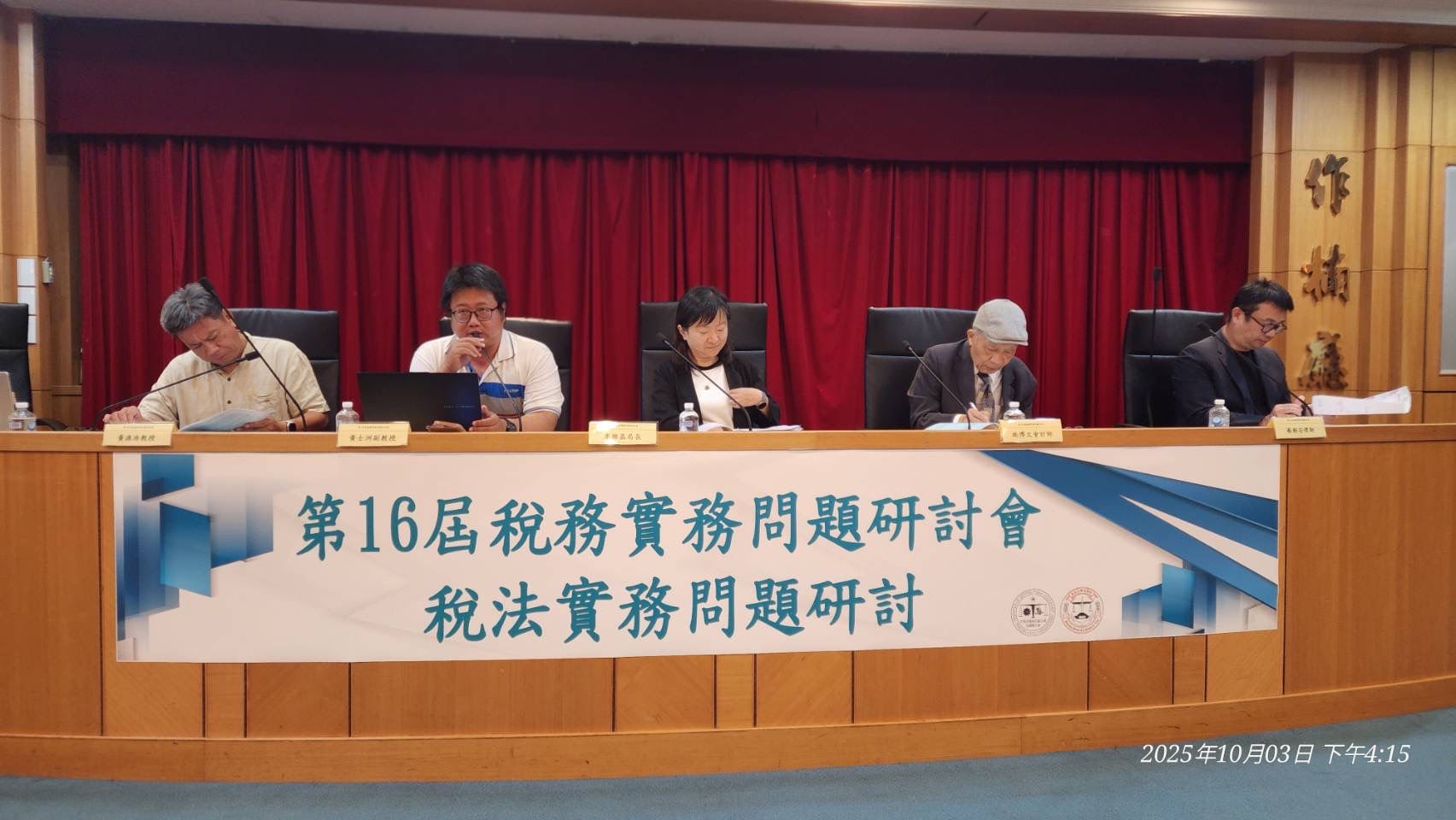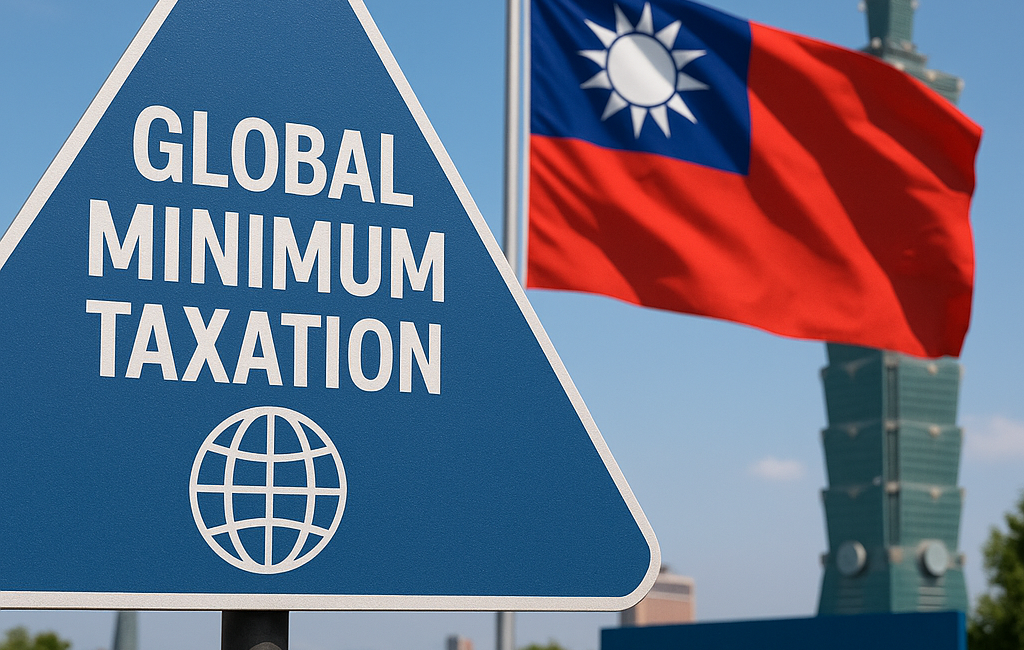This blog article is based on the presentation I delivered at the 16th Conference on Practical Tax Issues, jointly organized by the Research Center for Fiscal and Tax Law of Soochow University and the National Federation of Certified Public Accountants Associations of Taiwan, held on October 3, 2025, in the afternoon session. The presentation, titled “Recent Developments in the Pillar 1&2 Framework: Global Digital Taxation, the Global Minimum Tax Regime, Trade Conflicts, and Negotiation,” forms the foundation of this paper. The following section represents a structured summary of the second part of the presentation—Pillar 2: The Global Minimum Tax Regime.

The Global Minimum Tax: Conceptual Divergence Between Policy Design and Public Understanding
1. Introduction
The Global Minimum Tax (GMT), also referred to as Pillar 2, has become one of the most contentious initiatives within the ongoing reform of the international tax architecture. Media narratives in Taiwan commonly describe the policy as part of the Ministry of Finance’s (MOF) efforts to “align with international standards” and to “prevent the erosion of Taiwan’s tax base by foreign jurisdictions.” In practical terms, the MOF has proposed two major measures:
- In the short term, to raise the Taiwanese Alternative Minimum Tax (AMT) rate from 12% to 15%, applying only to very large enterprises with global annual revenues exceeding EUR 750 million; and
- In the long term, to implement the OECD version of the GMT under Pillar 2.
While these measures are presented as steps toward international integration, the official narrative diverges substantially from the current international dynamics and the prevailing policy reasoning among major economies. Other jurisdictions tend to begin by assessing whether participation in such an international initiative would bring net political or fiscal benefits. In contrast, the discourse in Taiwan has limited consideration of strategic or geopolitical implications.
2. Conceptual and Technical Complexities of Pillar 2
A review of the 200-page OECD technical documentation reveals the extraordinary complexity of the GMT regime. Practitioners and scholars alike often concede that the framework is exceedingly intricate and difficult to operationalize. In international tax forums, even experienced experts acknowledge that despite intensive study, the Pillar 2 mechanism remains opaque and conceptually fragmented.
One principal source of confusion lies in the multitude of exclusions, adjustments, and discretionary provisions, many of which closely mirror the interpretive language of IFRS (International Financial Reporting Standards). The high degree of subjectivity embedded in these provisions effectively invites case-by-case determinations, granting tax administrations significant discretion. Such discretion, in practice, tends to be exercised in favor of each jurisdiction’s own fiscal interest after implementation.
Furthermore, to reconcile diverse national preferences and secure political consensus, the Pillar 2 framework incorporates a number of implicit “back doors.” In the intuitive sense, a 15% minimum tax would be calculated as income tax expense divided by pre-tax profit, yet the actual computation is far more elaborate. Both pre-tax profit and income tax expense are adjusted, particularly under the Substance-Based Income Exclusion (SBIE), which permits partial deductions for tangible investment and payroll expenditures. This adjustment effectively excludes certain income categories and inflates cost components, producing higher effective rates than nominally expected and thereby reducing the number of multinational enterprises subject to top-up taxation.
During an academic presentation at Soochow University in 2024, I noted that official MOF communications made no reference to these exclusion clauses and adjustment mechanisms. My preliminary analysis suggests that some Taiwanese financial institutions—especially large life insurance companies—would likely be excluded from Pillar 2 calculations, whereas under the AMT they would remain fully taxable. Hence, a unilateral increase in the AMT rate from 12% to 15% risks mis-targeting domestic taxpayers. To date, the MOF has not provided clarification on this issue, underscoring the need for further policy transparency and impact assessment.
3. The U.S. Unilateral Approach: GILTI and the “Side-by-Side” Mechanism
The United States has pursued a unilateral and streamlined strategy, reflecting its pragmatic fiscal philosophy: simplify compliance, secure revenue. The GILTI (Global Intangible Low-Taxed Income) regime, introduced in 2017, embodies this principle through a simplified formula for calculating the foreign income of U.S. corporations.
By contrast, the OECD’s Pillar 2 framework requires jurisdiction-by-jurisdiction computations of effective tax rates. For a multinational enterprise such as Google, this entails performing separate calculations for more than 170 countries, generating immense compliance costs. Unsurprisingly, the Big Four accounting firms—rather than mid-sized audit practices—stand as the primary beneficiaries of this complex system. An illustrative case is SAP, Germany’s largest software firm, which invested heavily in developing a Pillar 2 compliance platform in collaboration with Deloitte.
In July 2024, the United States further revised its international tax framework through the One Big Beautiful Bill Act (OBBBA), updating GILTI into NCTI. Although structurally similar, the new system adjusted critical parameters: foreign tangible investment deductions and foreign tax credits were curtailed or eliminated, explicitly designed to repatriate real investment back to the U.S.. This reform effectively replaces the CFC (Controlled Foreign Corporation) rules and allows U.S. authorities to consolidate outbound tax governance.
Subsequently, Washington negotiated with the G7 to establish a “Side-by-Side” mechanism, under which U.S. multinationals would remain subject solely to GILTI or NCTI. Once taxes are remitted to the U.S. Treasury, other jurisdictions may not impose additional top-up taxes or excercising UTPR under Pillar 2. In practical terms, corporations such as Google or Facebook that have fulfilled NCTI obligations in the U.S. are thereby exempt from further assessment abroad.
This arrangement was reportedly acceptable to President Trump, who had initially proposed a Section 899 “Retaliatory Clause” within the OBBBA—threatening punitive tariffs against countries that imposed minimum taxes on U.S. firms. Following the Side-by-Side compromise, the U.S., G7, and OECD swiftly reached an accord, and the Section 899 measure was temporarily withdrawn.
However, this outcome has provoked significant discontent among OECD members. Non-U.S. jurisdictions must continue to perform multiple national computations, purchase specialized software, and pay substantial advisory fees to global accounting firms—costs that contribute nothing to real productivity, but merely expand the compliance industry.
4. Policy Loopholes and the Erosion of Tax Havens
A further development involves the widespread establishment of “back-door” arrangements by countries adapting the Pillar 2 framework. These mechanisms allow states to appear compliant while mitigating the actual tax burden on investors.
- Singapore, facing the potential deterrent effect of a 15% minimum tax, has adopted a compensatory mechanism: companies formally top up their tax payments to 15%, but the government subsequently refunds part of the difference via cash subsidies, thus preserving effective tax competitiveness.
- Vietnam’s National Assembly has enacted legislation to create a special fund financed by GMT revenues, designed to grant targeted subsidies to affected foreign enterprises.
- Ireland and certain Swiss cantons are reportedly preparing to implement similar rebate schemes or incentive funds.
These practices render the global implementation of Pillar 2 paradoxical. While most participating jurisdictions maintain loopholes to safeguard domestic competitiveness, the true pressure falls upon traditional tax havens, such as the British Virgin Islands (BVI), Cayman Islands, and Samoa, which lack both industrial substance and fiscal instruments to offset the effects. Consequently, major multinational enterprises are expected to relocate from these jurisdictions, aligning with Pillar 2’s implicit policy objective: the gradual elimination of conventional offshore tax havens. Yet, this transformation also entails substantial compliance costs and administrative burdens for multinational corporations and tax administrations alike.
5. Policy Implications for Taiwan
From a policy perspective, Taiwan must exercise strategic prudence rather than uncritical convergence. A declaration of “international alignment” without full comprehension of the institutional and political complexities risks underestimating the multidimensional nature of the reform. Following the introduction of the Side-by-Side mechanism, international part of discourse has shifted toward reconsideration of Pillar 2, with even Germany’s Chancellor and members of the Bundestag questioning the merits of continued participation.
Accordingly, Taiwan should adopt a measured, evidence-based approach:
- Clarify the scope and purpose of the GMT reform;
- Quantify potential fiscal and industrial effects through scenario simulations; and
- Decide policy direction only after comprehensive evaluation of benefits and costs across industries, investment structures, treaty networks, and cross-border service models.
Given the accelerating pace of geopolitical change, the stability of U.S. policy—including the possibility of shifts in the Trump administration’s future stance—remains uncertain. In such a volatile context, informed caution and policy adaptability are essential prerequisites for any decision on whether and how Taiwan should participate in the evolving global tax framework.



